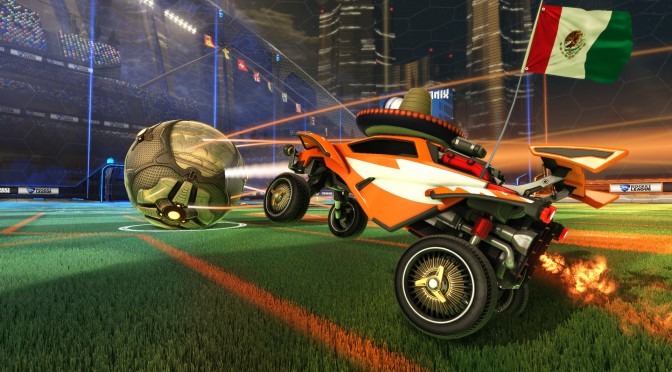Psyonix has released the March Update for Rocket League. According to the release notes, this new patch adds support for DirectX 11, as well as dynamic range controls for Audio. Moreover, it comes with some tweaks and enhancements for camera and controls.
Going into more details, the March Update adds Dynamic Range Presets. In the “Audio” tab within the options menu, you’ll find a new dropdown menu that contains Dynamic Range Presets.
Furthermore, this patch reduces Camera Shake intensity for most actions. It also adds a “Legacy” Camera Preset for players who prefer the original default settings.
Not only that, but this update will allow players to trade in Blueprints to get a Blueprint of a higher rarity.
As always, Steam will download this patch the next time you launch its client. Below you can also find its complete changelog.
Rocket League March Update Release Notes
BLUEPRINT TRADE-IN
Once the update is live, you’ll be able to trade in Blueprints to get a Blueprint of a higher rarity, just like you can with free items. Trade five Blueprints from the same series and same rarity to get one of higher rarity in return!
FIX FOR INVENTORY FILTERS
Speaking of Blueprints, inventory management is also getting a fix. Any filters you set when viewing your inventory will stay active until you exit your inventory. You’ll even be able to change item tabs while keeping your filters. This also means you’ll be able to trade in items of a specific rarity, and those filters will remain active after the trade. We hope this makes the trading process a bit easier.
CHANGES TO DEFAULT SETTINGS
We’ve made some slight adjustments to default settings for players picking up Rocket League for the first time. The new settings should make it easier for new players to see the field and control their car. These changes will not affect anyone’s modified control scheme or camera settings, but if players are using current default settings, they will change to the new default settings after the update. Here’s what’s changing:
CAMERA
Default Camera Preset
Distance increased from 260 to 270
Stiffness increased from 0.3 to 0.5
Camera Shake intensity reduced for most actions
“Legacy” Camera Preset added for players who prefer the original default settings
CONTROLS
Controller Deadzone value reduced from 0.3 to 0.2
Dodge Deadzone value increased from 0.5 to 0.8
Reduced the intensity of controller vibration at the default setting
Boost now only vibrates the controller when Boost is activated, and not while it remains active.
The “Medium” and “High” Vibration settings use the old Vibration
INTERFACE
Nameplates are now “Always Visible” by default.
Team Colored Boost Meter is now enabled by default.
DYNAMIC RANGE CONTROLS FOR GAME AUDIO
We added HDR Audio to Rocket League in August’s Season 12 Update, but soon you’ll have even more control over the sound of the game. The March Update will add Dynamic Range Presets. In the “Audio” tab within the options menu, you’ll find a new dropdown menu that contains Dynamic Range Presets. Here’s how those presets will affect the game’s audio:
Medium (Default)
Medium will provide the most balanced audio mix for headphone users, and is a similar profile to the game’s current mix.
Low (Night)
Low is designed for listening at very low levels. Loud sounds become quieter and quiet sounds become louder, and we also remove some sounds that are less important. We do not recommend using this setting on high-fidelity systems or when playing Rocket League at high volume.
High (Theater)
This is the best mix for those who play Rocket League at high volume or with high-quality sound systems. Loud sounds will be more vibrant and explosive, and quiet sounds like crowd noise and ambience will be less overpowering, helping to add a more dynamic experience.

John is the founder and Editor in Chief at DSOGaming. He is a PC gaming fan and highly supports the modding and indie communities. Before creating DSOGaming, John worked on numerous gaming websites. While he is a die-hard PC gamer, his gaming roots can be found on consoles. John loved – and still does – the 16-bit consoles, and considers SNES to be one of the best consoles. Still, the PC platform won him over consoles. That was mainly due to 3DFX and its iconic dedicated 3D accelerator graphics card, Voodoo 2. John has also written a higher degree thesis on the “The Evolution of PC graphics cards.”
Contact: Email

